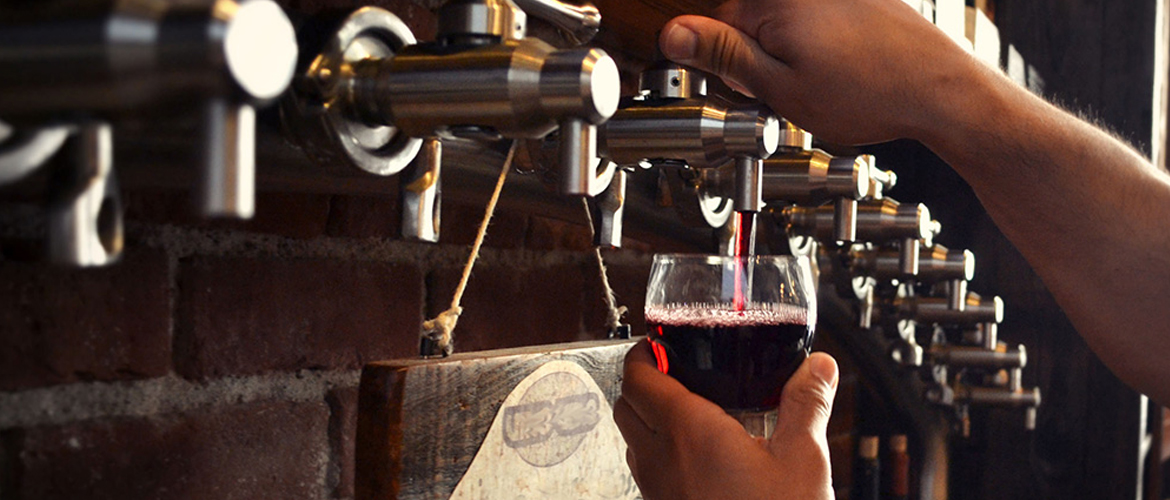From Vine to Tap: Utilizing Keg Fleets for More than Beer
Posted: December 13, 2017
Kegs are the traditional vessel of choice for brewers when it comes to the distribution of their product. In fact, the word “keg” inherently implies “beer.” But that is all changing. Every day, more and more craft beverage producers are beginning to feature their products “on tap” – for several reasons. We are tapping into this “keg-volution” and exploring the reasons and benefits of kegging – for wines.
Beyond Beer – What’s on Tap?
The advantages of using a keg can be applied to more than just beer and brewers. Winemakers are beginning to branch out into the wonderful world of kegging. You may stop into a bar or restaurant and notice there is a selection of wines available on tap. It may seem a little strange – but it is a genuinely smart and lucrative business decision when you are producing and selling a high volume of wine.
A Winemaker’s Woe
According to “Wine Maker” Magazine, some individual winemakers in the zithromax U.S. produce hundreds of gallons (or liters) of wine each year. (Some even produce thousands of gallons.) That’s a lot of wine to bottle. Even just 200 gallons of wine per year can equate to thousands of bottles – bottles that need to go through a rigorous process of washing and sanitizing, rinsing, draining, drying, filling, corking, and labeling.
For larger winemakers and vineyards, kegging should be a no-brainer. They likely spend a good portion of their production budget on the bottling and labeling process, and can save both time and money by switching over to kegging.
Admittedly, there is something alluring about popping open a bottle of wine – and as a winemaker, you may not want to deprive your customers of that experience. But for bars and restaurants, having wine on tap has even become a trend. And there are definite benefits to the winemaker for distributing their product in kegs.
Why Kegs?
Beyond the cost and labor savings that kegging provides, there are distinct benefits for a winemaker to consider:
Maintaining Product Integrity
Maintaining your wine’s integrity is of the utmost importance. The last thing you want to do is leave a customer with (literally) a bad taste in their mouth. And some wine drinkers might not realize that ordering wine by the glass in a restaurant can often be a gamble. A bottle of wine may have been open a day or two – or even more when you order by the glass. (This depends on the popularity of the wine.) The moment the bottle is uncorked, the wine gets ambien oxygenated – which impacts its taste.
Wine served from a keg, however, is fresh from the first glass to the last, thanks to the inert gas in the keg. A keg also saves wine from “cork taint.” Corks aren’t infallible, and oxygen can get through. Corks can also leak, split or chip – problems a keg completely removes from the situation.
Going Green
Wouldn’t it be cool to save time, money – and the environment? With kegs, winemakers can. Using kegs instead of bottles is truly the greenest choice a winemaker can opt for. When treated right, reusable kegs can be used for more than 30 years(!) That means kegging for wines helps reduce our carbon footprint.
According to Free Flow Wines – an organization that leases out, cleans and fills stainless steel kegs for vineyards and winemakers – each reusable keg saves over 2,340 lbs. of trash from the landfill over its lifetime. Just one of these 19.5 L kegs can replace 26 wine bottles – which is great for both the environment and the winemaker’s bottom line.
Start Kegging Your Craft Beverages Today
Even though kegs and beer pretty much go hand and glove, it doesn’t mean that kegging can’t be for everyone. If you have a high volume of a craft beverage product – whether it be beer, cider or wine – it’s beneficial to consider the opportunities that kegging can afford you. If you have any questions about getting into the keg-game, Hillebrand is here to help.
